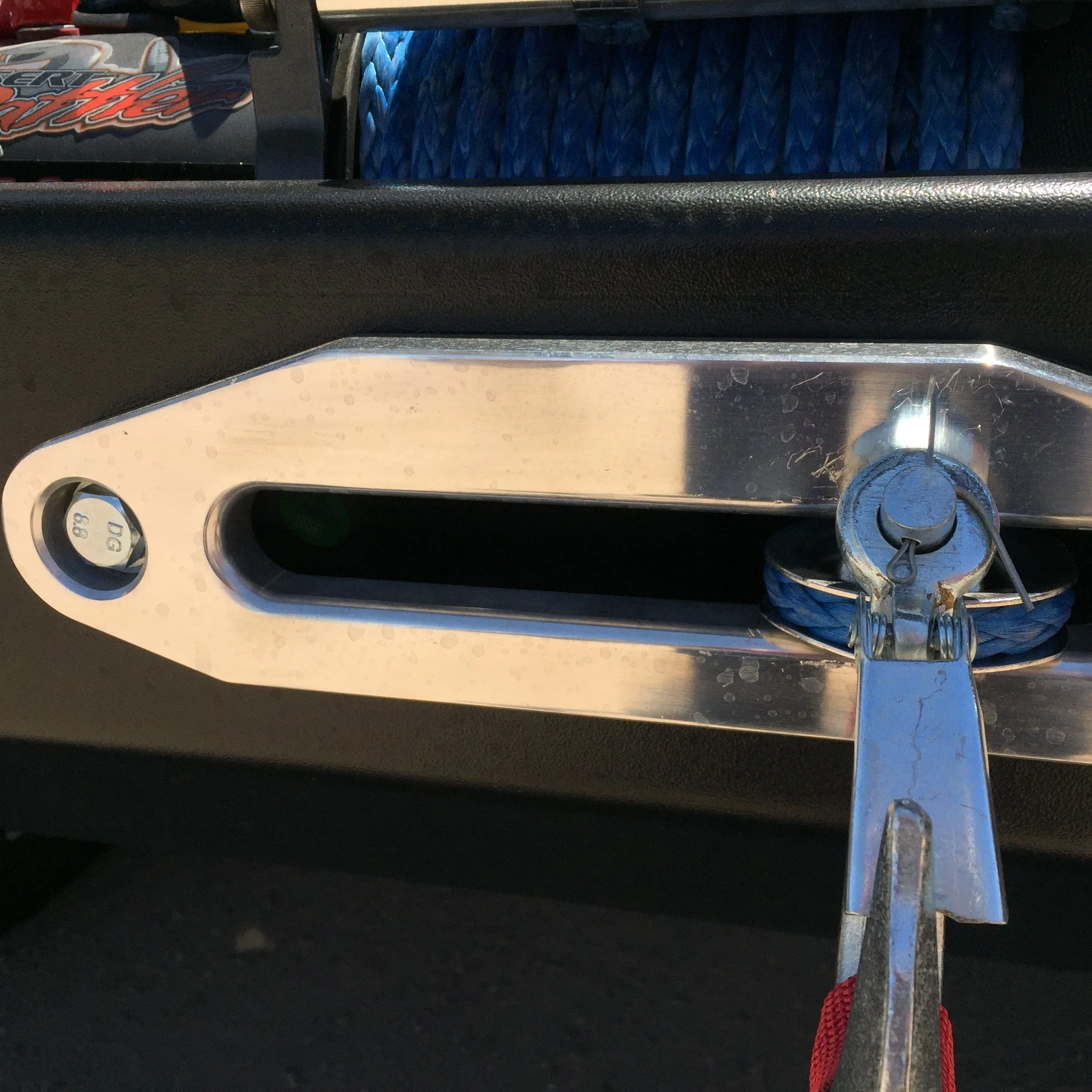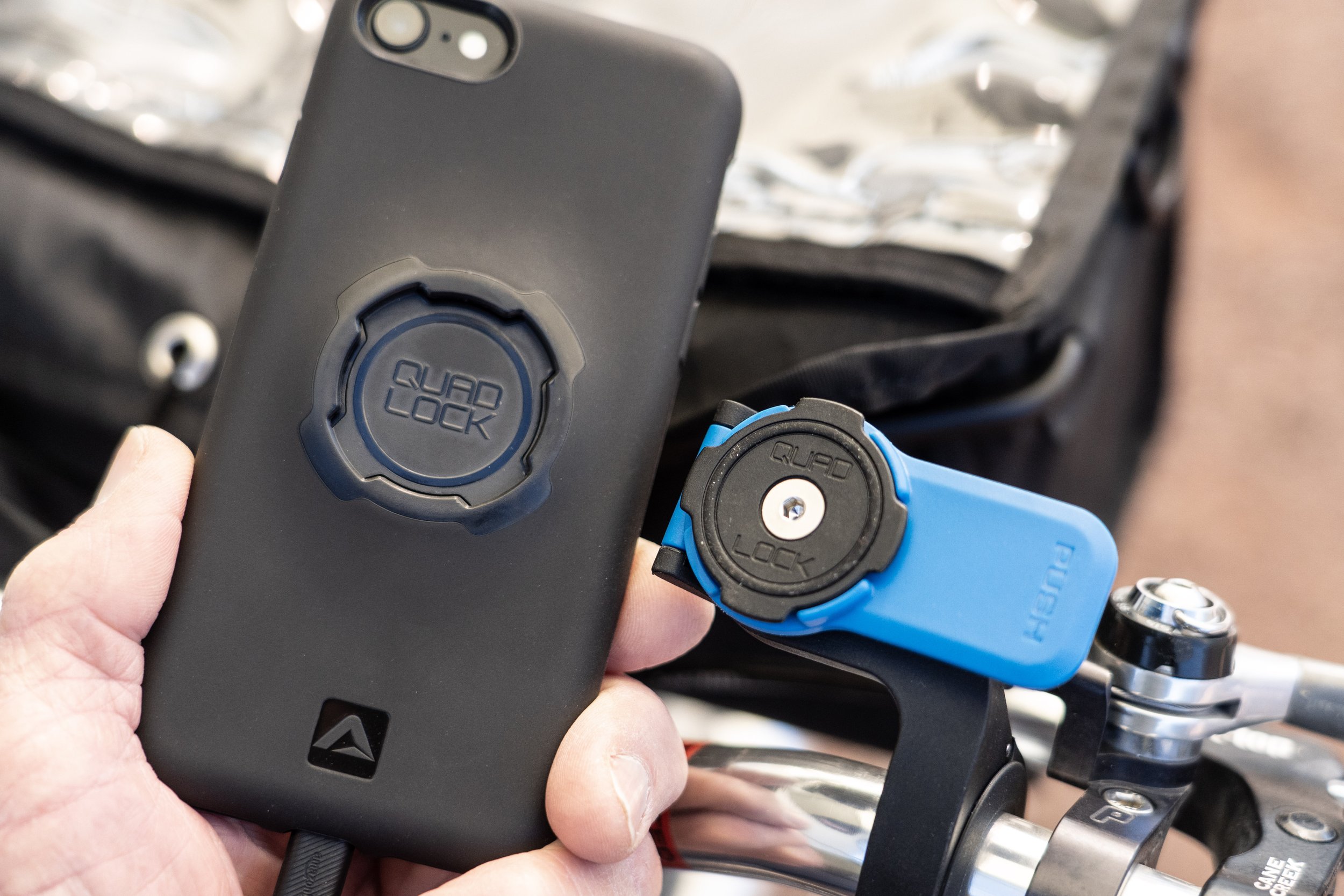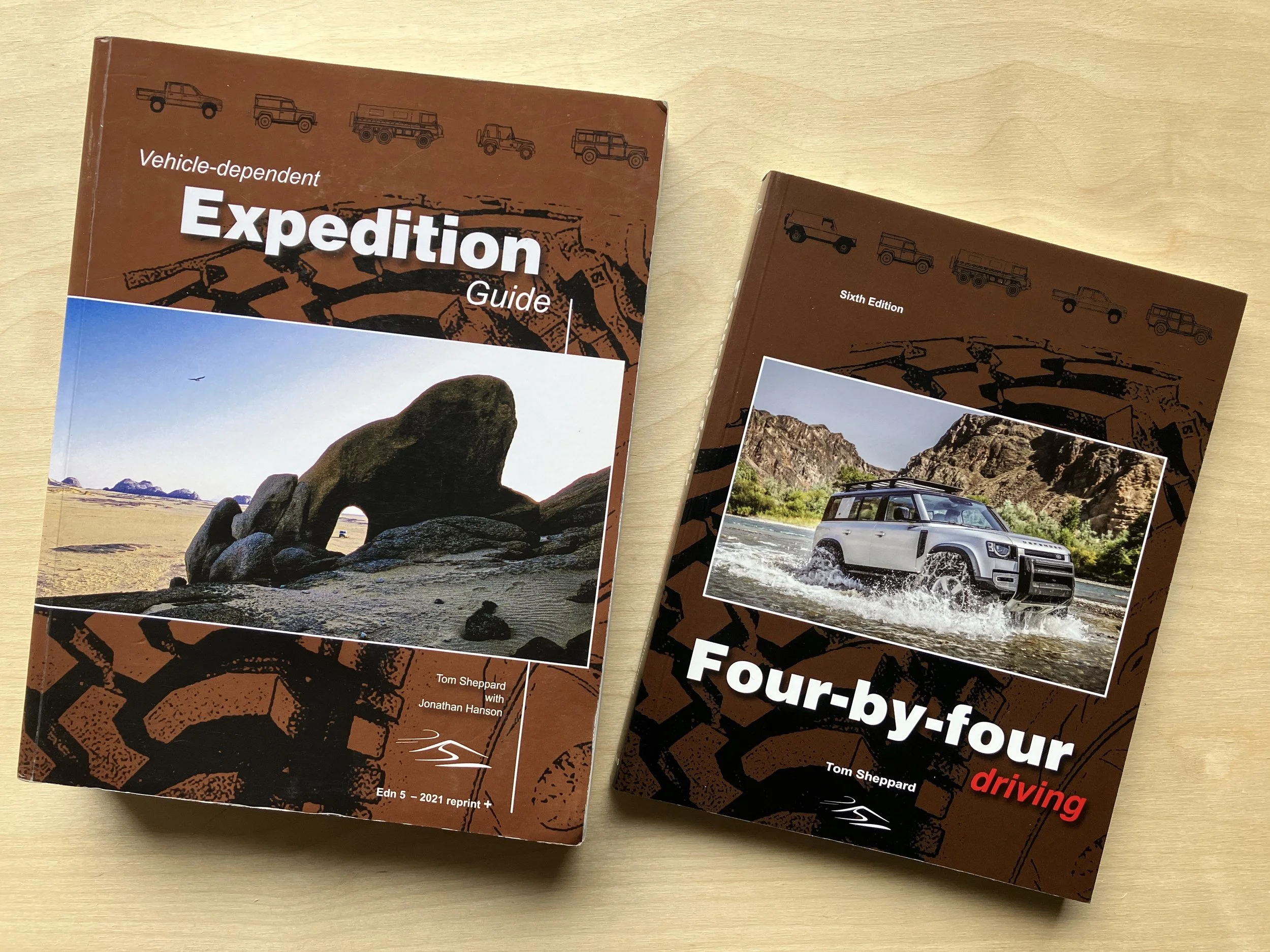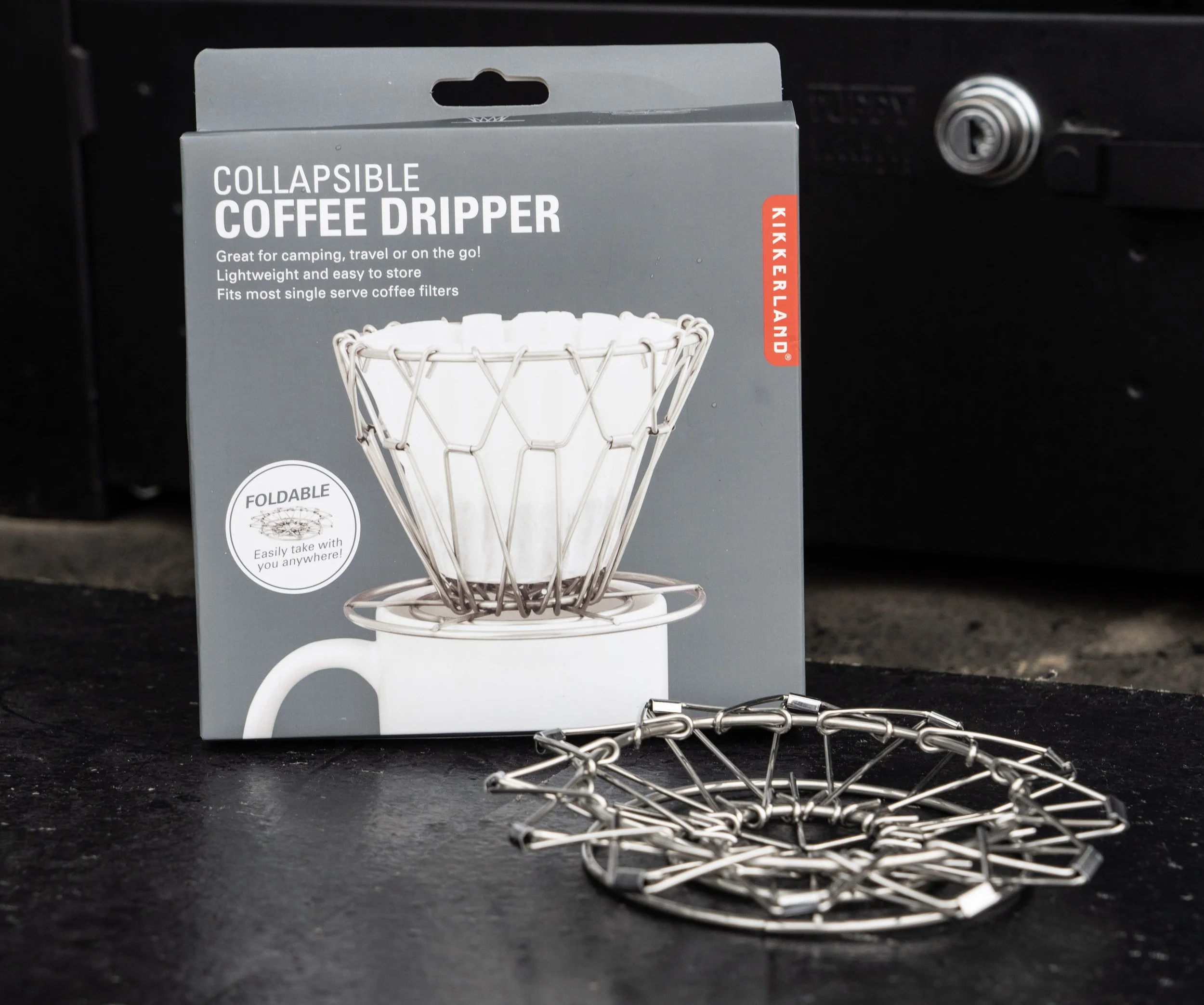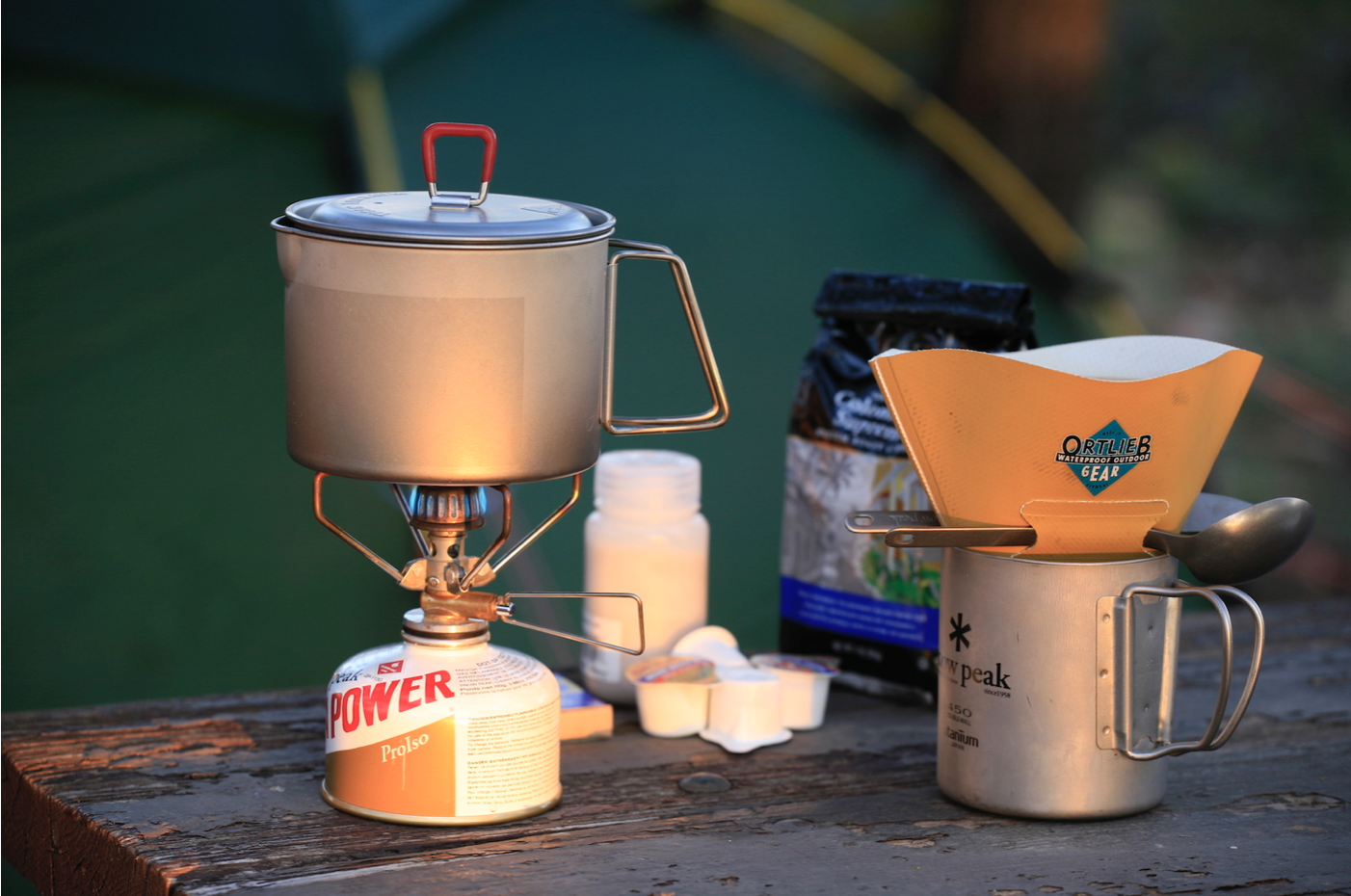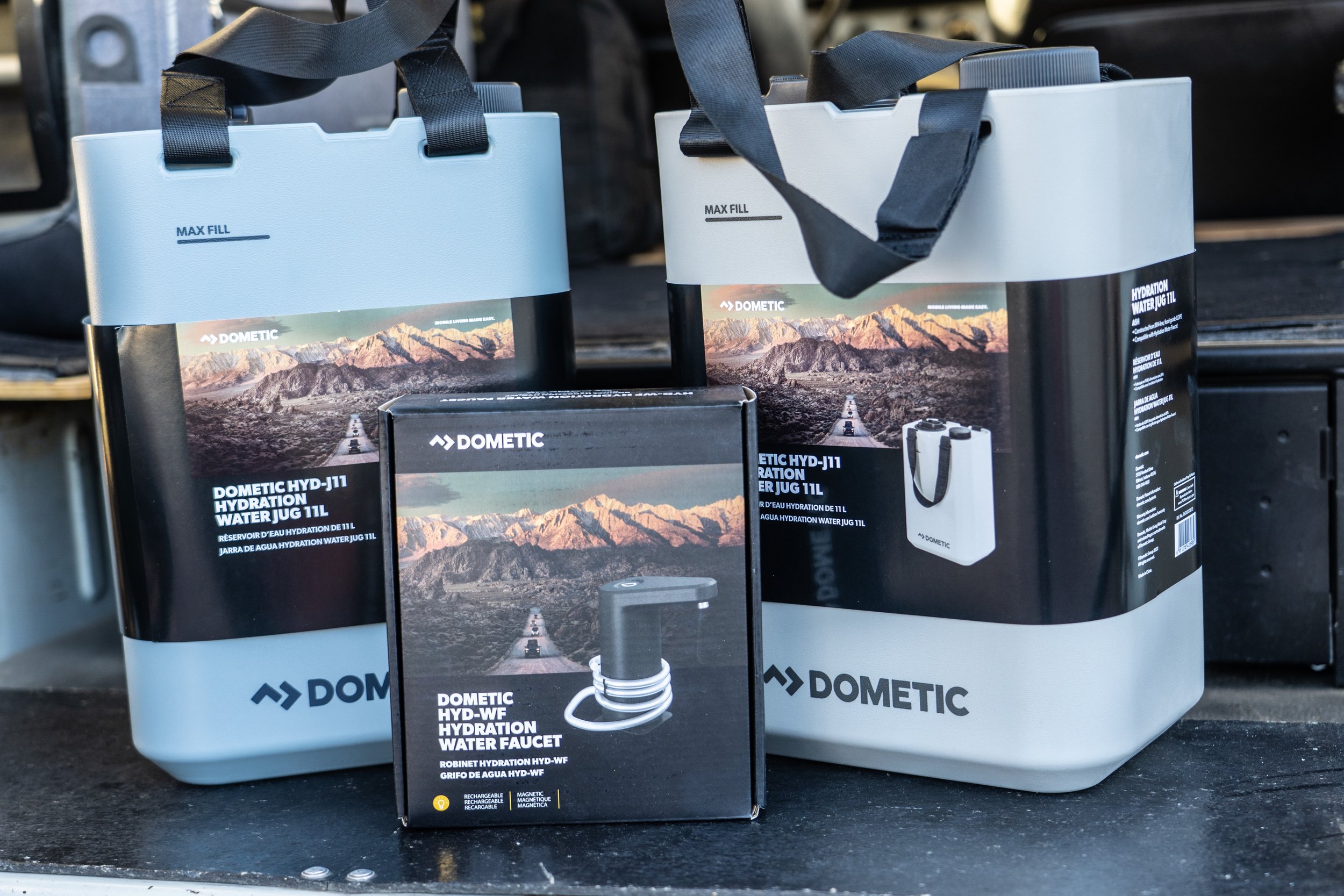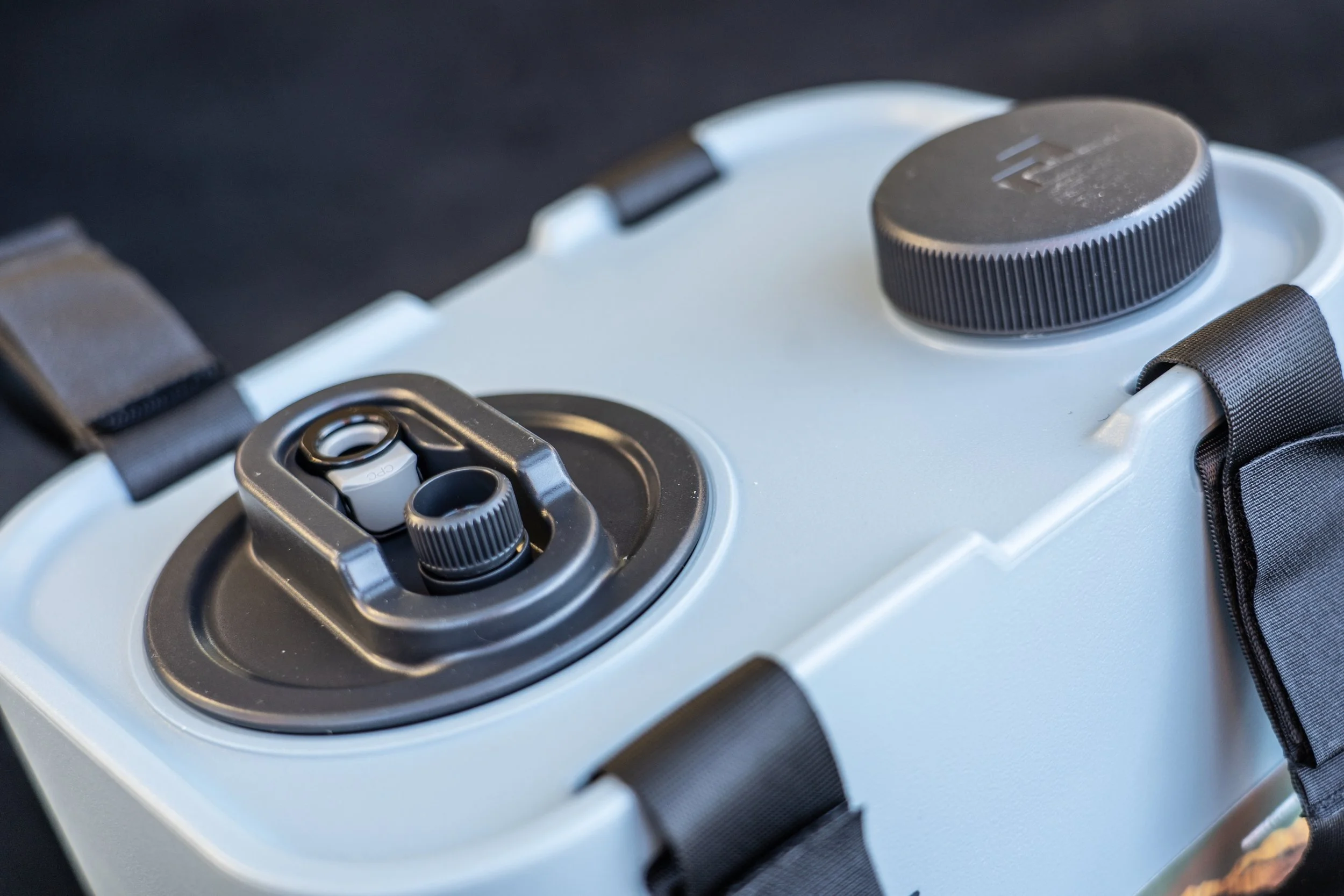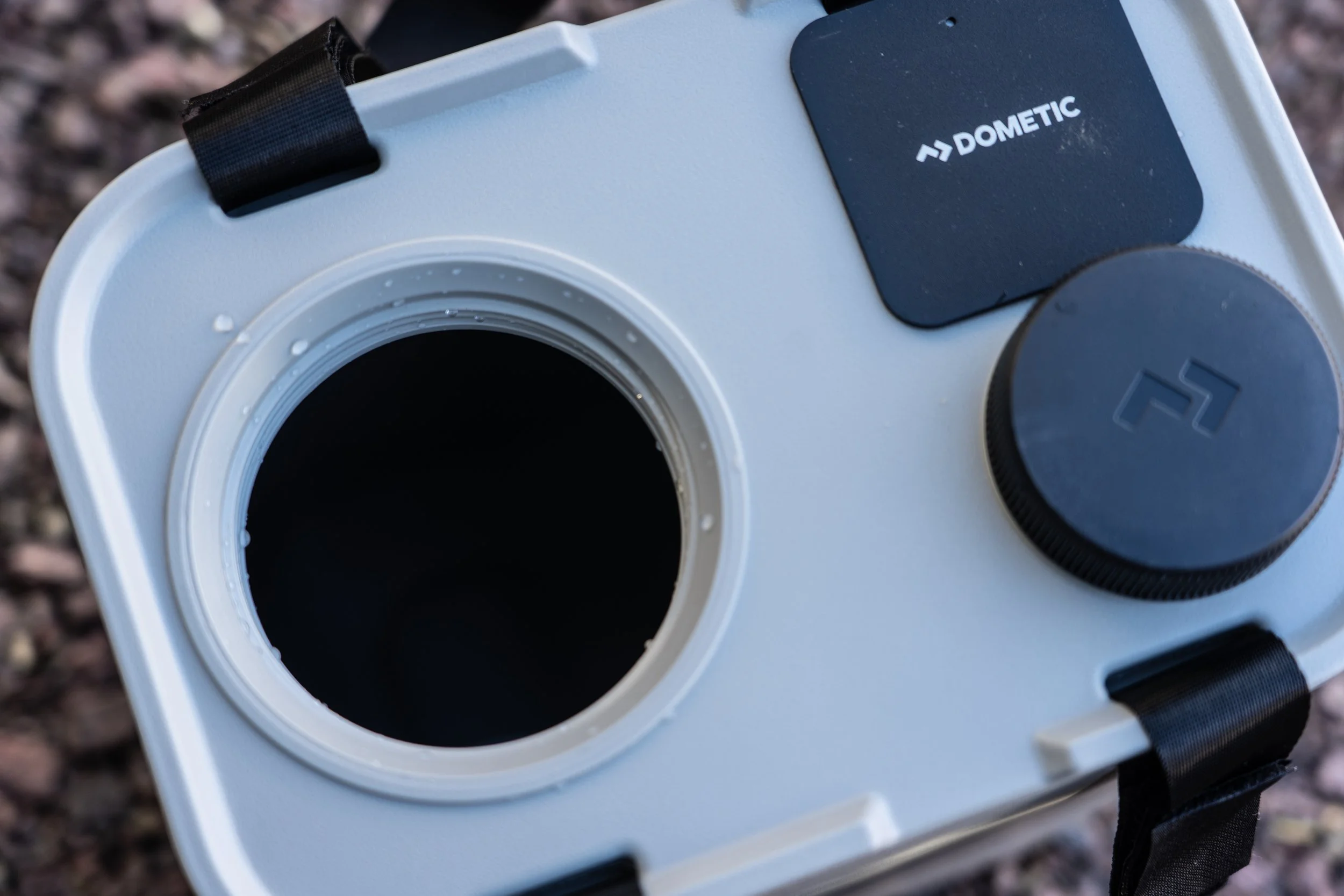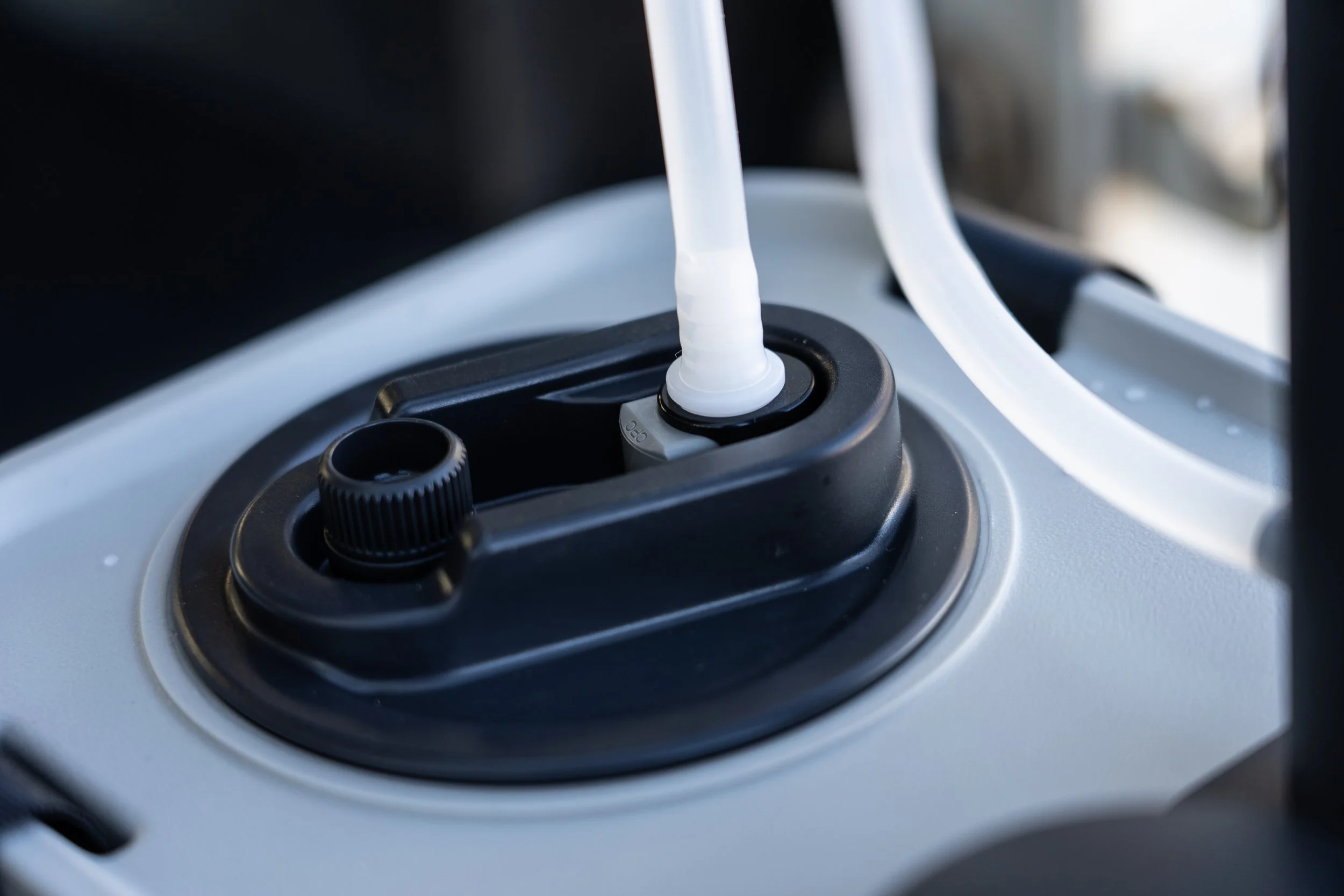
Overland Tech and Travel
Advice from the world's
most experienced overlanders
tests, reviews, opinion, and more
Seemed like a good idea . . .
Mount a massive (5,000 pound dry weight) overhead camper with an eleven-foot-long floor and multiple slide-outs on a short-bed truck. Then hang a motorcycle off the back.
The owners claim Ram should be responsible for the very expensive repair, saying the stated load capacity of the 3500 truck is 7,680 pounds. It appears, first, that they specced the wrong truck, looking up a regular-cab, long-bed 2wd 3500 model. The capacity of a crewcab 4x4 is significantly lower.
But that’s nearly beside the point. It doesn’t take much thinking to realize that a pickup is designed to carry its stated load in the bed, not six feet off the back. The leverage applied to this truck’s chassis must have been stunning over mediocre Baja roads. I’m on the side of the giant corporation this time.
Full story on MSN here.
How not to do a winch fairlead
I counted at least three things wrong on this winch mount I noticed in a parking lot in Tucson. First and worst, the chamfer on the edge of the fairlead opening is far, far too sharp, and will exert too much stress on a line dragged across it under load. Additionally, the owner has cranked the thimble and hook against the opening, visibly gouging the aluminum. These gouges will play hell with a synthetic line drawn across it. Finally, the sloppy installation of the cotter pin, with only one end bent over, not only compromises the security of the pin but has scratched the finish of the (poorly designed) fairlead. Both ends should be bent all the way over so there are no sharp bits sticking out.
While there is nothing wrong with the hawse fairlead in concept, a roller fairlead is a better choice for synthetic line, persistent myths to the contrary. The only caveat is to install a new fairlead if you are switching from steel to synthetic line, as the steel cable will have scored the rollers.
OutdoorX4 subscription deal for Exploring Overland readers.
I’ve been contributing a regular column and frequent features to OutdoorX4 magazine since its inception, and have watched it mature to excellence. The coverage is well-rounded, and the editorial philosophy is genuinely conservation-oriented, unlike some publications that merely pay lip service to the idea.
Editorial focus leans toward the real-world and attainable in terms of both travel pieces and vehicles. Few destinations or “builds” are out of the reach of the majority of us, which enhances the appeal.
Frank Ledwell, the publisher, has offered readers here a ten-percent discount on subscriptions. The coupon code is exploringoverland, and there is no deadline, so if you read this, you can secure the discount. Help support small publishers . . . and freelance writers!
OutdoorX4 is here.
Quad Lock phone mounts
A few years ago, bicycling on one of Tucson’s spectacularly potholed neighborhood streets, I let my attention wander and clipped a nice deep crevasse, which sent me and the bike straight down on my left shoulder. One result was a broken collarbone; the other was the immediate sight of my iPhone cartwheeling across the pavement.
The phone, in its protective case, survived, but I was less than impressed with the Ram Mount clip that had held it with a single spring-mounted tab. Nevertheless I continued using it out of thrift. That early iPhone finally died last month, and I took the opportunity to upgrade the mount.
After a bit of research I landed on the Quad Lock system, which employs a four-way locking cruciform clip secured by a spring tab. You match up the phone’s fitted case tom the mount, press in and rotate, and it locks. The advantage to this is that even if the spring tab is depressed by accident, the phone would still have to rotate through 45 degrees before it came free. It’s significantly more secure than the old mount.
In addition to handlebar mounts (for both bicycles and motorbikes, of course) Quad Lock makes a kit for vehicles, using either a suction-cup windshield mount or an adhesive-backed dash mount. The windshield mount is next on my list.
Quad Lock advertises the security of their mounts by deploying them in sponsored Baja race trucks. But have you ever seen how those things float over terrain on three feet of suspension travel? I’m willing to bet a bicycle ride in Tucson is a tougher test.
Quad Lock is here.
Prometheus Design Werx DA Hoodie (yes, a hoodie)
If you’d told me a couple years ago I’d someday be photographed wearing a hoodie I’d have laughed at you. Even the so-called “technical” versions struck me as barely a step up from neighborhood perp wear. Give me my Barbour Beaufort with a pile lining, or a sweater under my Country Innovations double Ventile jacket, thanks very much.
Then Patrick at Prometheus sent me one of their DA hoodies, fortuitously just before we were to head for the northernmost point in the U.S., Utqiagvik, Alaska.
I had to admit it was significantly thicker, denser, and definitely better looking than virtually every other example I’d seen, in a very handsome olive-ish color. So I packed it—and I was glad I did. The DA’s Polartec WindPro poly fleece shrugged off the stiff 40-degree breeze blowing in off the Beaufort Sea, above, with nothing but a shirt underneath. As a single-layer piece of outerwear it was extraordinarily versatile. As with all fleece, it’s a bit of a struggle to don over a flannel or wool shirt, as the two fabrics try to Velcro themselves together, but that’s a first-world problem. There’s a draw cord at the bottom to seal out updrafts, two handwarmer pockets and two interior bucket pockets, in addition to the upper sleeve pockets. And, of course the de rigueur Velcro swatches for your favorite tactical patches. (The current version of the DA also includes a zipped “hunter’s pocket” across the back.)
$189 for a sewn-in-the-U.S. garment like this strikes me as a very good deal. My DA (Do I have to say it again? Yes) hoodie is going back up to Alaska next week, this time to keep handy in our cabin. Very well recommended.
PDW produces many other high-quality products, here.
Christmas books . . .
There is still time before Christmas/Hannukah to get one of the 30 remaining copies of the overlanding bible, the Vehicle-dependent Expedition Guide, directly from Tom Sheppard in England. He’s offering shipping for £19. Given the current bonkers exchange rate, that makes buying a VDEG from England a bit cheaper than getting it directly from us (before we ran out). Email Tom directly and first (!) to arrange purchase and shipping. [Click here to Email Tom.]
We have an ample supply of Four-by-Four Driving, the globally recognized standard manual on the subject, used to train special forces units in both the U.S. and the U.K. (I contributed the sections on winching and jacks for this book.) Have a copy on your desk in a few days by ordering here.
An excellent, inexpensive folding coffee filter holder
A long time ago I concluded that the best way to make coffee in camp was with disposable paper filters and pour-over—see here. There’s the niggling issue of the one-time nature of paper filters, but the water saved compared to what you need to clean, say, a French press, is worth it, and the filter can be burned.
For years I used the collapsible Ortlieb filter holders highlighted in the linked article:
However, sadly, they are no longer made. So I’ve been on the lookout for a suitable replacement, and recently found one on Amazon, for $16.95. It’s stainless steel, and opens in different permutations to accept either Melitta-style or basket filters.
The Kikkerland holder is a little heavier than the Ortlieb, and doesn’t fold as flat. On the other hand you don’t need to support it with utensils or twigs as with the Ortlieb, and it’s usable with different filters. So it scores at least as high—especially since it’s available.
Dometic's brilliant GO Hydration Jug
Despite being lucky enough to have reviewed hundreds—possibly thousands—of products over the last 35 years, from utensils to Unimogs, I’m not the least bit jaded. I still love doing it, and I still get excited whenever a box shows up at our mail depot with some new bit of kit to try.
I am, however, harder to impress than I used to be. And I’ve noticed that certain types of product—lightweight stoves, backpacking tents, binoculars, 12V fridges, and camp seating come immediately to mind—tend to go a long time between genuine innovations.
Until recently that was the case with portable water containers. You had your blue steel NATO can—my longtime standby—the Scepter, the Reliance, and a host of generic plastic five-gallon/20-liter clones. The Lifesaver can stood out for its purification function, but otherwise it was pretty much a standard H2O jerry can. The Rotopax was innovative in terms of its shape and mounting hardware, but (very) expensive as a system, and again more or less just a container. (It’s also, through no fault of the company, become something of a caricature as a de rigueur external accessory to announce that you are driving an OVERLANDING VEHICLE.)
Then, at this spring’s Overland Expo West, I was introduced to Dometic’s new GO Hydration Water Jug. Two minutes into the rep’s spiel, I knew it was different. Revolutionary might be too strong a word, but it’s got genuinely clever innovation in every feature. After the show, for the first time in a long time, I actually pestered my contact at Dometic to get a review sample. It took a while because it seemed others had been impressed too: the units frequently sell out.
Why was I so impressed? Let’s look at the product and the thinking behind it.
First, the designers realized that a full five-gallon jerry can of water, which weighs 45 pounds give or take depending on the container, is an awkward thing to carry, not so much due to the weight as the awkwardness of having the weight all on one side. So they essentially cut the dimensions of a jerry can in half. Turn a Dometic jug on its narrow side and stack another on top of it. The two take up just about the same space as a single standard jerry can, and in fact will fit in many jerry can holders. Yet each jug holds 11 liters, 22 for a pair. That’s 5.8 gallons, more even than a NATO can. Despite that, two full Dometic jugs, one on each side, are far easier to carry than a single jerry can with less capacity. One-and-a-quarter inch (removable) webbing straps help with comfort.
Upright, the jug is stable, and two grooves in the top rim facilitate securely strapping it down (or you can use the carrying straps).
There are two openings in the top. The smaller one is, cleverly, a standard 63mm Nalgene size and thread, which means you can screw any one of a number of water filters directly onto it to fill the can with filtered/purified water. Remove the cap and you’ll see a rubber flow control plug, which allows you to tip and fill small containers without spillover. A groove in the bottom of the can provides a secure grip for your bottom hand. Remove the flow control to quickly empty or fill the jug. In addition to the cap, the Dometic jug comes with a twist-valve replacement cap, to allow simple gravity feed with the can on its side.
The other, larger cap, unscrews to reveal an opening large enough to insert your hand and forearm for scrubbing when necessary—something few if any other water containers allow. It’s big enough to allow filling the can from a bucket with little if any spillage. The cap itself incorporates a screw-down breather, to avoid vacuum lock when dispensing from the tap or pump, and a CPC quick-connect fitting that is connected to a silicone feed tube which reaches the bottom of the can.
The fitting is used with the Dometic can’s nifty option: a USB rechargeable pump that dispenses water with a double tap on a touch-sensitive switch, and automatically shuts off after one liter or one minute, in case you set it to fill a pot and wander off and forget because you’ve just noticed the black bear rummaging through your Dometic fridge. The pump has a magnetic base, and comes with two plates which you can affix with adhesive pads to the can itself or anywhere else. The pump will also obviously stick to a steel bumper, tailgate, or the edge of a truck bed. (Land Rover and newer Ford pickup owners will need to use the stick-on plates.) An LED lights up the spigot area in the dark. Nice.
The Dometic Hydration Jug is made of food-grade (did they need to tell us that?) LDPE, and these things are stout. I stood on top of one that was erect, then I stood on it laying on its side. It didn’t squeak. Yeah, I’m probably lighter than the average American these days at 150 pounds or so, but you get the picture.
See why I was impressed? And in use, every feature functions just as it’s supposed to. The rechargeable pump is neat, but you don’t really need it; the included twist valve and gravity feed works just fine, especially given the breather.
A single Dometic Hydration Jug would be worth having even if you already have bulk water storage in your vehicle. Having a portable 11 liters of water with either a spout or a lighted pump would be handy in many situations—carry it to a picnic table if you’re transiting and staying at Jellystone Park. In fact, with the pump you could easily rig one of these as an impromptu shower.
Dometic has released a flurry of well-designed new products in the last year. The GO Hydration Jug is one of the best. Highly recommended.
Find Dometic here.
Hint: When using “Search,” if nothing comes up, reload the page, this usually works. Also, our “Comment” button is on strike thanks to Squarespace, which is proving to be difficult to use! Please email me with comments!
Overland Tech & Travel brings you in-depth overland equipment tests, reviews, news, travel tips, & stories from the best overlanding experts on the planet. Follow or subscribe (below) to keep up to date.
Have a question for Jonathan? Send him an email [click here].
SUBSCRIBE
CLICK HERE to subscribe to Jonathan’s email list; we send once or twice a month, usually Sunday morning for your weekend reading pleasure.
Overland Tech and Travel is curated by Jonathan Hanson, co-founder and former co-owner of the Overland Expo. Jonathan segued from a misspent youth almost directly into a misspent adulthood, cleverly sidestepping any chance of a normal career track or a secure retirement by becoming a freelance writer, working for Outside, National Geographic Adventure, and nearly two dozen other publications. He co-founded Overland Journal in 2007 and was its executive editor until 2011, when he left and sold his shares in the company. His travels encompass explorations on land and sea on six continents, by foot, bicycle, sea kayak, motorcycle, and four-wheel-drive vehicle. He has published a dozen books, several with his wife, Roseann Hanson, gaining several obscure non-cash awards along the way, and is the co-author of the fourth edition of Tom Sheppard's overlanding bible, the Vehicle-dependent Expedition Guide.


